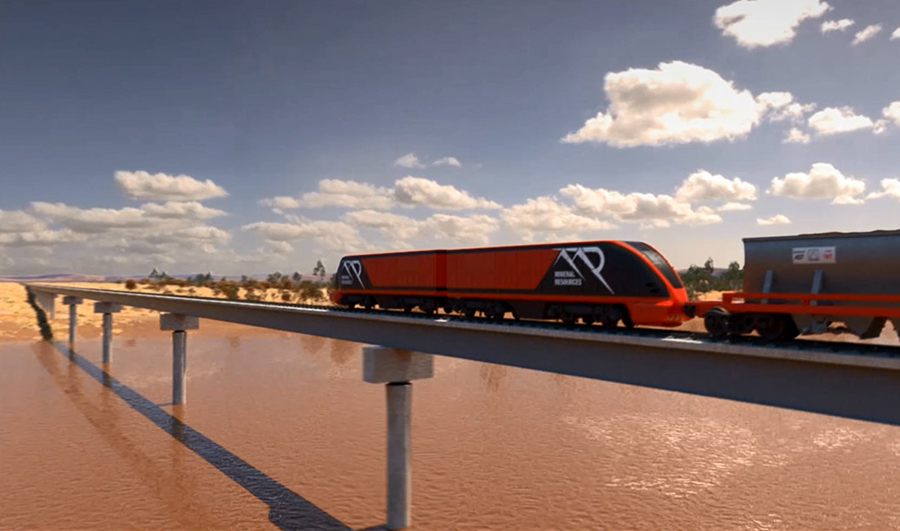
Australia’s Mineral Resources (ASX:MIN) is a mining services company supplying a wide range of services including remote site power and aerodrome services, plant processing and crushing, pipeline design, port logistics and sales.
The Perth-based company has operated BC Iron’s 7mtpa Iron Valley mine in the central region of the Pilbara since August 2014. Ore is transported to Port Hedland and Mineral Resources says with mine and port supply upgrades tonnage can be more than doubled to 16mtpa.
The system is almost completely re-locatable once a resource is completely exhausted
That’s where the $1.5 billion company’s BOTS come in. That stands for Bulk Ore Transportation System and Iron Valley is potentially the first location where the system can be deployed.
BOTS is an autonomous elevated rail line that according to Mineral Resources occupies a niche between heavy rail and conveyor: BOTS employs an elevated below rail structure “comprising various designs, dependent on ground clearance requirements to satisfy track geometry, hydrology, topography, geotechnical conditions, and grade separation needs” reads the website.

Source: Mineral Resources
BOTS has many advantages says Mineral Resources: It’s significantly less capital intensive than traditional heavy-haul rail because the below rail design minimizes cut and fill earthworks during construction.
In addition it’s much more environmentally friendly because it results in much less disturbance to surface water and fauna habitat. On top of that the system is almost completely re-locatable once a resource is completely exhausted.
Mineral Resource which will make the technology available to others says it has the potential “to open up significant mining assets long considered stranded.”
Hat tip: Project Monitor
2 Comments
Altaf
BOTS may not be suitable to all remote mines wanting to get connected to ports.
If the company has a mine which is small and can be mined out in 2-3 years but is under hold due to high cost of permanent rail connection, BOTS system can come in handy because it is re-locatable. By laying BOTS, a small mine can be exploited using minimum disturbance to environment.
For big mining ops which run for generations, they need a proper set up of rail, road tracks, permanent human settlements and as such environment get disturbed.
WALT1ORO
Somewhat like the timber railroads that exploited the vast early forests of North America until the late 1930s in the US with movable track panels and log cribbing to cross rough terrain without permanent right of way tracks or bridges. When you seek to find many of the areas well known to have been logging railroads today there is rarely a trace they were even there. They would move the track into an uncut area, harvest the timber and remove everything within a few years with little to show that the railroad existed.